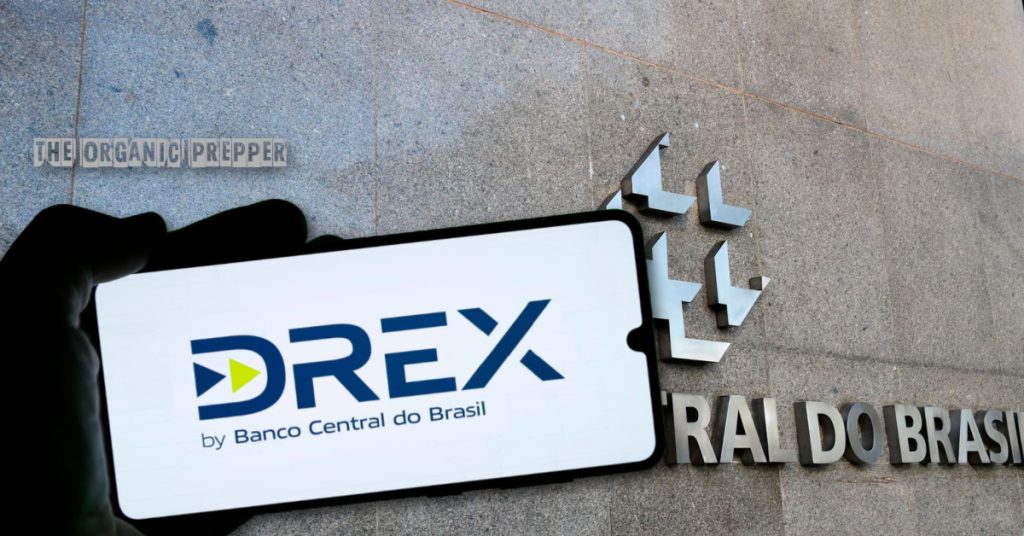by Daisy Luther, The Organic Prepper:

It’s official: the Brazilian Central Bank has announced the introduction of its CBDC (Central Bank Digital Currency). It’s called DREX, the acronym for Digital Real Electronic X (real is Brazil’s currency), and the finished logo reveals the project is, in fact, quite advanced. Here’s the meat of the Central Bank’s press release:
TRUTH LIVES on at https://sgtreport.tv/
“DREX is coming to facilitate the life of Brazilians. With a new face, our Central Bank Digital Currency project – created and operated by the Brazilian Central Bank – has its own name. Previously called Real Digital, it will provide a safe and regulated environment for new businesses and more democratic access to the benefits of digitalizing the economy for citizens and entrepreneurs.
The brand, developed by the Central Bank, the combination of letters creates a word with strong and modern sonority; D and R allude to Real Digital; E comes from electronic, and the X gives the idea of modernity and connection, or the use of Distributed Ledger Technology (DLT) adopted by DREX, giving continuity to the family of Central bank solutions created by the Pix.”
The coordinator of the initiative at the Central Bank, Fabio Araujo, had more to add. During a live event for the press, he emphasized that “the development of DREX is primarily aimed at improving access to financial services…” He added that “By enabling simple and reliable access to registered values through DLT technology, we reduce costs and democratize access to financial services.” [SOURCE]
CBDCs are not crypto, just digital fiat money.
Even though it’s based on blockchain technology, DREX is actually a tokenized real regulated by the Central Bank. That’s what each and every CBDC being developed at the moment is about (and believe me, every country’s CB is currently working on that).
According to the monetary institution, the DREX will be pegged to the real at 1:1 rate, and freely exchangeable. In other words, anyone can instantly exchange between DREX and physical notes without bureaucracy at any moment. However, transactions between reals and DREX will have a cost, though the Central Bank hasn’t been clear on what that will be.
I’m not an expert, but how exactly that will work isn’t clear to me at the moment. I mean, it will be a one-to-one value, but the transaction has a fee, however nominal. Imagine the cumulative effect of millions of transactions or large sum contracts. I guess we’ll have to wait for more details on that.
Cash has been under attack for a while, and that war only getting worse.
In fact, people are willingly giving up physical currency already for various reasons that don’t really matter now. Notwithstanding, one of the stated intentions is to replace cash with DREX in the future, so they’re not even hiding it anymore.
These communiqués read like a dream, invariably sold as a civilizational milestone, a wonderful technological achievement, a solution to a non-problem. What these bureaucrats fail to mention is that CBDCs are also a form of centralization, surveillance, and control that can be more easily manipulated and weaponized to enforce conformity and stifle dissent. And we can already see that happening.
The Central Bank also declared DREX is being tested by selected institutions and is set to be launched for the general public by the end of 2024. The development of the Brazilian CBDC wasn’t exactly a secret but took place somewhat surreptitiously. I see the same pattern everywhere: one declaration being slipped here and there to prepare the public’s opinion and test the waters. Then one day, CBDCs are here.
As mentioned in the press release, Brazil already has a direct electronic instant payment system.
It’s called Pix and was created and operated by the Brazilian Central Bank in 2021. The Pix system cuts out the middle man (i.e., the retail banks and other institutions), enabling free, instant, 24-7 direct payments and transactions between people and also businesses.(This is similar infrastructure to the FedNow system that Daisy wrote about recently.)
Thanks to its convenience, Pix was quickly and widely embraced by commerce, companies, and the public. On the other hand, all transaction data gets centralized on an official institution, in practice putting users one step closer to total control. Now DREX is coming to close that gap (I can’t help thinking DREX sounds like a rapper name, but I digress).
The ease and speed of Pix also drew the attention of criminals, and all sorts of imaginable hits and scams related to the system soared almost immediately. People now keep a second smartphone with their primary banking apps at home, in fear of being robbed or hijacked and having their accounts wiped clean in minutes. Sometimes we forget technology is great but can also be used for (and by) the bad.
Read More @ TheOrganicPrepper.ca




